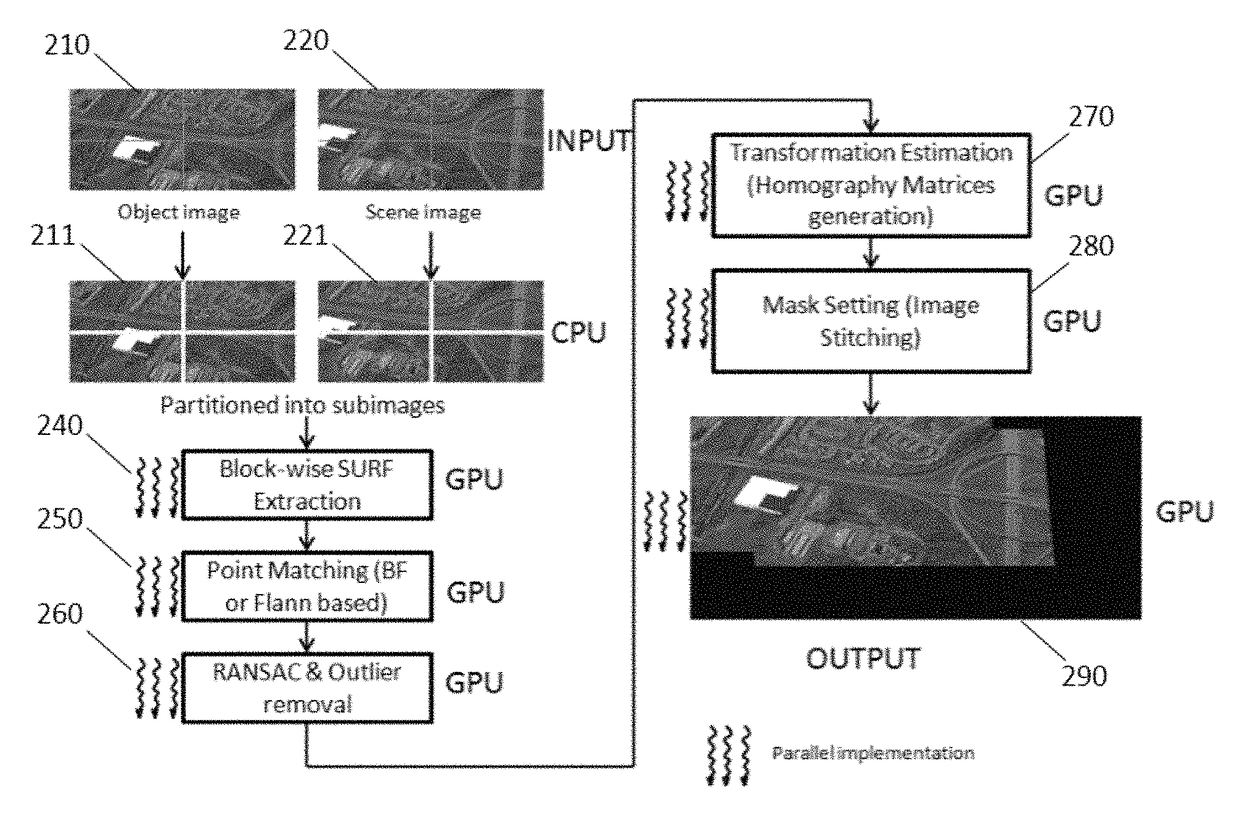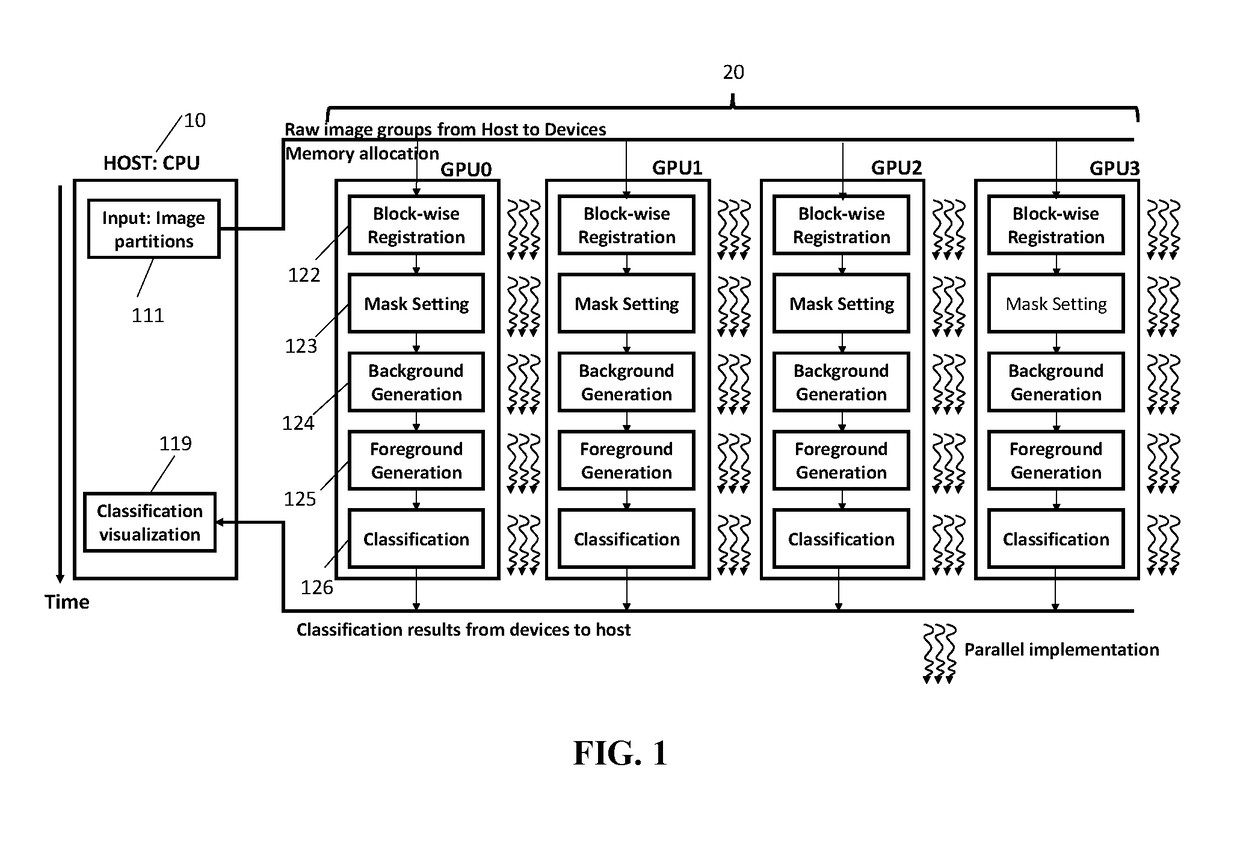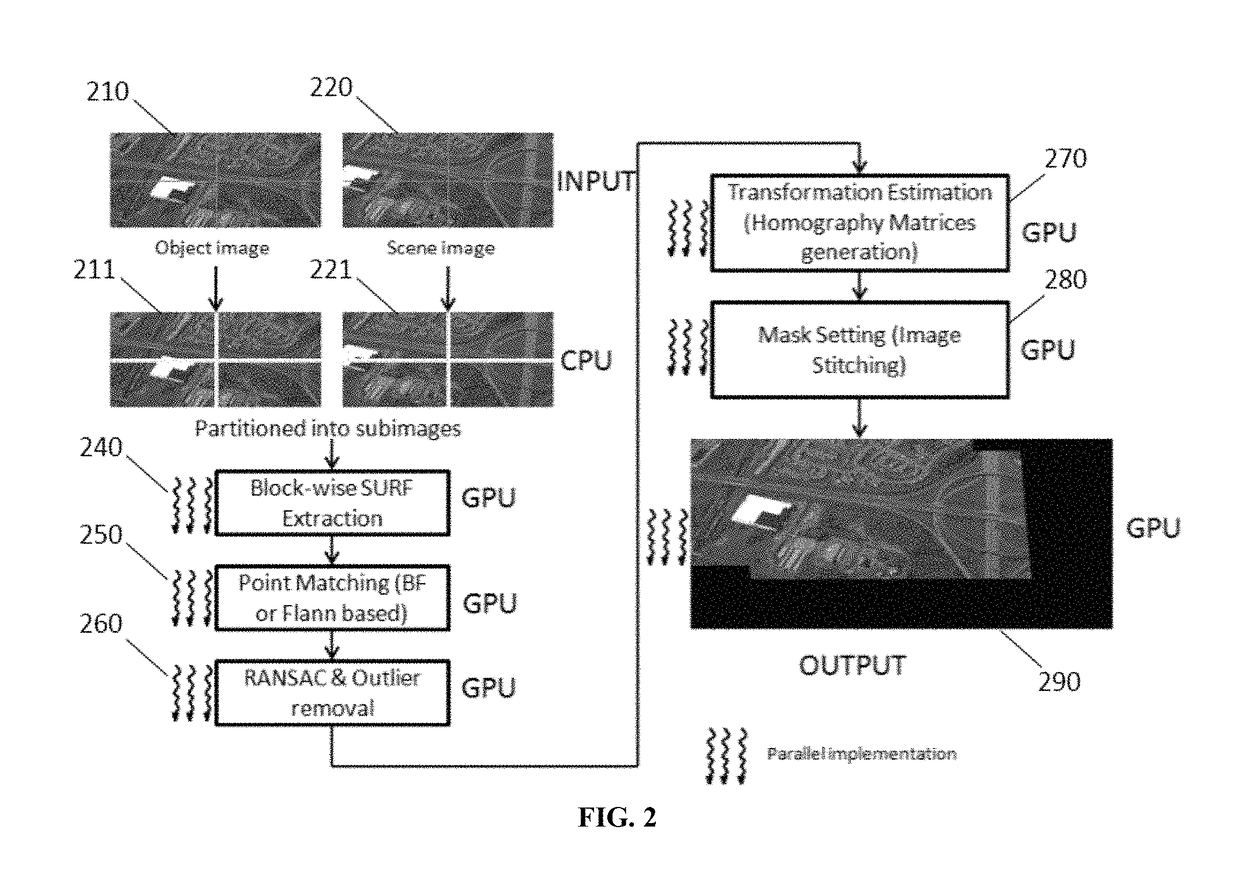Method and system for detecting multiple moving objects from real-time aerial images
a technology of aerial images and multiple moving objects, applied in the field of object recognition, can solve the problems of inability to directly generalize to wami scenarios, inability to monitor such a large amount of data with a human operator, and system typically producing an overwhelmingly large amount of information, etc., and achieve the effect of reducing or eliminating synchronization tim
- Summary
- Abstract
- Description
- Claims
- Application Information
AI Technical Summary
Benefits of technology
Problems solved by technology
Method used
Image
Examples
Embodiment Construction
[0039]For those skilled in the art to better understand the technical solution of the disclosed subject matter, reference will now be made in detail to exemplary embodiments of the disclosed subject matter, which are illustrated in the accompanying drawings. Wherever possible, the same reference numbers will be used throughout the drawings to refer to the same or like parts.
[0040]In accordance with various embodiments, the disclosed subject matter provides a method for detecting multiple moving objects based on Wide Area Motion Imagery (WAMI) datasets via parallel computation in graphics processing units (GPUs). In accordance with some other embodiments, the disclosed subject matter provides a High Performance Computing based system to implement the disclosed method.
[0041]Note that, Wide Area Motion Imagery (WAMI), in its various forms, is also referred to as Wide Area Airborne Surveillance (WAAS), Wide Area Persistent Surveillance (WAPS), Persistent Wide Area Surveillance (PWAS), W...
PUM
 Login to View More
Login to View More Abstract
Description
Claims
Application Information
 Login to View More
Login to View More - R&D
- Intellectual Property
- Life Sciences
- Materials
- Tech Scout
- Unparalleled Data Quality
- Higher Quality Content
- 60% Fewer Hallucinations
Browse by: Latest US Patents, China's latest patents, Technical Efficacy Thesaurus, Application Domain, Technology Topic, Popular Technical Reports.
© 2025 PatSnap. All rights reserved.Legal|Privacy policy|Modern Slavery Act Transparency Statement|Sitemap|About US| Contact US: help@patsnap.com



